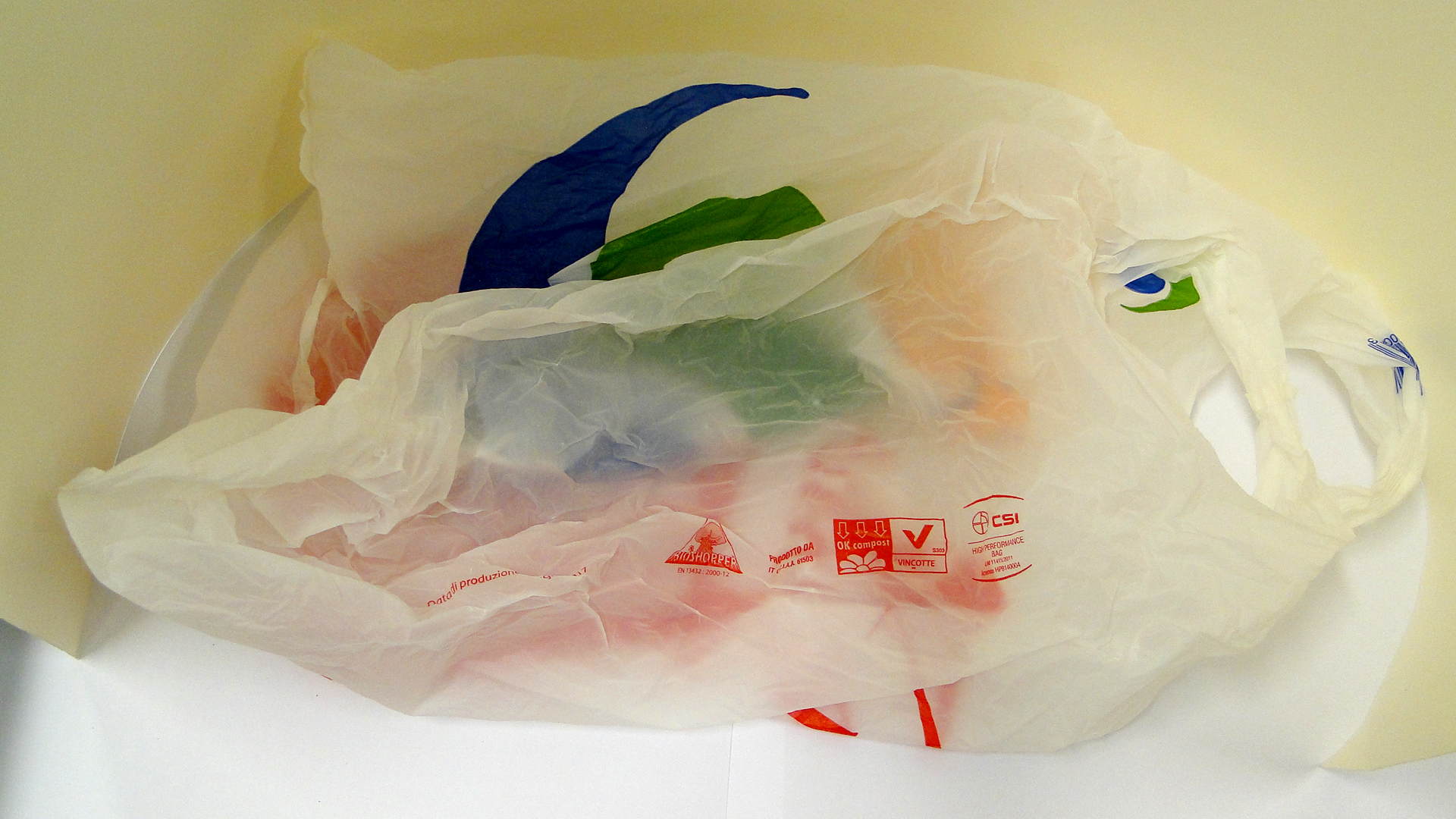Plastics
Polybutyrate adipate terephthalate (PBAT)
General information
Description
Polybutyrate adipate terephthalate (PBAT) is derived from fossil oil, but it is compostable and hence less harmful when it ends up in nature than non-degradable plastics. PBAT feels soft, almost velvety, and does not crackle. PBAT can be transparent, both milky and coloured. Milky PBAT fluoresces blueish under UV. Between polarizing filters is shows a blue-grey/white-brownish pattern.History
It is not entirely clear when PBAT first appeared on the market. From the start of the 21st century interest in bioplastics has increased enormously and the number of applications and production methods is growing ever since.Production, Application, Appearance
PBAT is used mainly as film in the packaging industry. Similar to PE film it stretches before it breaks, therefore it is used as a substitute for PE film. PBAT is often added to other bioplastics (such as PLA) to increase flexibility.Properties
Material properties
ThermoplasticDensity: Rigid = 1.26 g/cm3
Melting point: 110-120°C
Glass transition temperature: 55-65°C
Identification properties
Cell structure (foam): not applicableSmell: no characteristic smell
Touch: soft / velvety
Sound: Film = soft (hardly any) sound
UV-radiation (when clear): fluoresces blue
Polarizing filters (for clear EVA): film produces a blue-grey / white-brownish pattern
Degradation
Process
Photo-oxidation, soiling (electrostatic).Details
PBAT is not considered a problem plastic. However, it is compostable and may show problems with time.Symptoms
Loss of mechanical properties resulting in fractures and tears.Susceptibility
UV-radiation: MediumLight: Medium
Oxygen/Ozone: Low
Temp: Low
RH: Medium
Preventive conservation
Recommendations
UV-RADIATION: keep below 75 µW/lm UV filter for daylight and fluorescent light - reduce intensityLIGHT: 1 slight change in approx. 30 Mlx.h Moderate light dose - control intensity and exposure time
OXYGEN / OZONE: ambient conditions
TEMP: common indoor conditions 10-30°C
RH: common museum conditions 40-60% RH fluctuations: setpoint ±10% or ±5% when allowing seasonal fluctations between 35-65%



